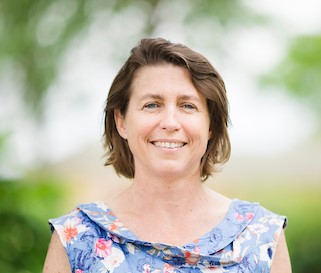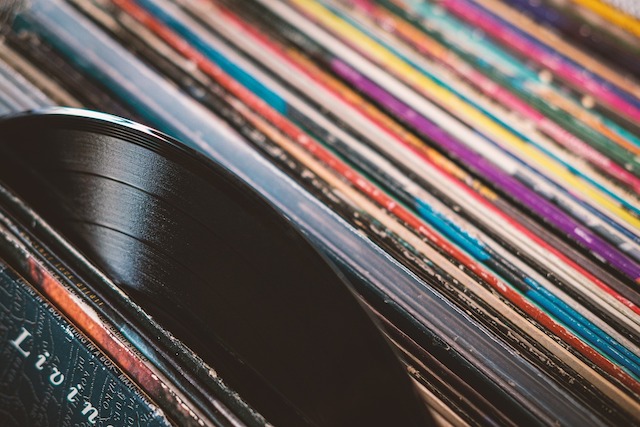Featured in

- Published 20250506
- ISBN: 978-1-923213-07-4
- Extent: 196 pp
- Paperback, ebook, PDF

AUSTRALIA AS A nation is a mere 125 years old, Australian citizenship even younger. Until the Nationality and Citizenship Act of 1948, all Australians were categorised as British subjects, even those who may not have considered themselves British at all. This included the Irish, but also, of course, the many First Nations peoples who had their own conceptions of communal rights and responsibilities going back millennia. Since the citizenship act, waves of migrants from across the globe have come to call Australia home, bringing their cultures and stories with them in varying ways – including on the page.
Making sense of the complexity of cultural heritage in the Australian literary tradition is not easy. Indeed, the more I think about it, the more complicated it becomes.
In mid 2023, I became the director of AustLit, Australia’s bio-bibliographical database of Australian literature and storytelling housed at the University of Queensland; it’s the only national bibliographical database on this scale in the world. AustLit has over one million work records – that is, records that provide extensive bibliographical information about specific literary texts. It also contains almost 200,000 author records as well as dozens of curated datasets and research projects. It is an extraordinary resource, and I’m delighted to be its custodian – this role has given me a renewed interest in exploring the challenges, limitations and possibilities of bibliography.
What does bibliography have to do with literary culture? Well, in AustLit’s data there are a whole bunch of searchable fields for author records – date and place of birth, gender and so on – that are networked to work records, which also have many searchable fields. For example, you can search for all crime novels set in Melbourne written by women, or for autobiographies about family conflict written by authors born in Brisbane – or who arrived in Australia – between 1950 and 1960.
AustLit also has a ‘cultural heritage’ field for writers. For many, the first things that come to mind when considering cultural heritage may be buildings or monuments – something material – but that’s not what AustLit means by cultural heritage. Nor does the term refer to ‘nationality’, which is not a field in AustLit – if a work is listed in the database, it will by definition have some connection to the nation, whatever we might think of the nationalist endeavour and its ideological underpinnings.
In AustLit, cultural heritage refers to cultural background(s). All those records in the database have been entered manually by indexers across the country over many decades, and the general historical indexing practice has been that unless an author explicitly states their heritage, requests its inclusion and/or confirms its significance to their writing, no cultural heritage will be attributed to them. Authors can have more than one, or they can have none.
We could say, then, that in AustLit ‘cultural heritage’ is both historical and cultural but also familial and personal. Unlike genealogy, AustLit doesn’t record a writer’s mother and father (their particular ancestors) but the wider cultures of those ancestors on the assumption that this heritage might have something to tell us – not just about the author as a person but about the literary works they produce.
For these reasons, much of the cultural-heritage field has depended on explicit self-identification. As a result, it’s an underutilised field, which limits its analytic possibilities. From one perspective, this is a shame because cultural heritage does have significant potential for finding and making visible the diversity of Australian storytellers: it offers the potential to analyse how cultural diversity intersects with gender, genre and literary form, or to explore the relationship between cultural heritage and literary prizes, and how these connections have changed over time. It might also give us a clearer sense of who is representing whom across Australian literature.
But the cultural-heritage field also poses a number of challenges, such as how to find and recognise cultural difference without simultaneously othering it – that is, how to resist the ways that dominant identities are perceived as default.
And that’s just the beginning.
WHAT IS ‘CULTURE’, for one, especially when we’re talking about literary studies? We can think of it as both meaningful cultural artefact (the literary text) and the very environment in which we live – something we’re so immersed in that it can be hard to see, like the water in which a fish swims. Our sense of our culture arises partly through relationships to living people – to kin – and partly through stories about the dead. And, of course, cultural heritage is only one of many forms of relationality through which any person is shaped; it would be dangerously reductive to assume that a given author’s cultural heritage makes sense of all their writing or limits their imaginative range.
Understanding how culture is integrated into a sense of self is challenging. What do we even inherit from the cultures of our ancestors? We may be able to accept, quite readily, that we are shaped by our cultures in all kinds of conscious and unconscious ways – that we inherit traits, practices, beliefs and stories – but it’s impossible to determine precisely how cultural heritage impacts not just any given person but also the stories they tell (assuming these are different things) in the past and in the present. In one sense, all stories, at the level of both form and content, are embedded within cultures – but since cultures are unstable and change over time, what is it that a writer might inherit?
All of us, moreover, have multiple heritages, multiple allegiances, some more known, understood and meaningful than others; some more claimed than others; some more shameful than others; some we may well want to conceal. Claiming a cultural heritage, then, is about more than just ‘identity’ (that troublesome word); it is a form of identification, a ‘detour through the other that defines the self’, as literature professor Diana Fuss describes it. Fuss reminds us that identifications and their meanings are fluid and contingent, both voluntary and involuntary, solidifying and falling away in response to all manner of events and experiences. And they are always bound up with desire. Although we don’t get to choose our ancestors, we can choose the ones we identify with, and this identification will always be partial, subject perhaps to the stories we want to tell ourselves as much as the stories we don’t. Our identifications not only condition how we perceive ourselves but how we are perceived by others. In this sense, we shape cultural heritage just as it shapes us.
These questions have become even more acute since I became part of a team engaging in a project on Irishness in Australian literature and how one might identify it: character? Trope? Theme? While not wanting to restrict an understanding of Irishness to identity, it would be impossible to ignore those with Irish ancestry, the Irish diaspora in Australia, when studying the role of Irishness in the Australian literary tradition.
Before I started this project, it would never have occurred to me to identify as having Irish heritage even though, on my father’s side, I am descended from a long line of Irish Catholics, then Irish-Catholic Australians, who left County Clare in the 1860s as part of a migration that has become part of both the global Irish diaspora and the settler-colonial occupation of Australia. In light of this project, I’m no longer so sure. I wonder if this is because I now know more about this diaspora and its profound impact on Australia. And surely all forms of identification are also, at the same time, forms of disidentification. It is true, I suppose, that some Irish-Australians have identified as Irish in order to disidentify with Britishness and the brutality of British imperialism and its ongoing insidious impacts on Aboriginal and Torres Strait Islander peoples. To be on the side of the oppressed rather than the oppressor. Is that what’s happening with my shifting sense of identifications? Or is the process of learning about the Irish diaspora enough? Would all our identifications expand infinitely if we could see how connected we all are? More disconcertingly, is this project uncovering an identification – or bringing it into being?
In this sense, we forge the story of ancestral heritage in the present, which risks it being both circumscribed and instrumentalised. These stories may well make sense of the present but risk simplifying the complexities of the past – these are stories also grounded in places, in communities and, inevitably, in bloodlines, and that latter trope always has the potential to become a dubious preoccupation. These stories – which are themselves ancestral and cultural – proliferate in the way that ancestry does, branching off again and again into multiplicity and possibility, and into unknowns. Some of these might offer liberating forms of knowing worth pursuing. Others might become their own prisons.
The interest in (some might say obsession with) identity is often described as a modern phenomenon, and a suspect one at that. I can appreciate these concerns, but I’m not so sure. Ancestry has long been meaningful across many cultures. Even if modern conceptions are historically contingent, they did not emerge from nowhere. And as Aboriginal and Torres Strait Islander storytellers remind us, many cultures have ways of acknowledging and respecting ancestors. It is no coincidence that most authors with a cultural heritage attributed to them in AustLit are BlackWords authors – that is, part of our vast Aboriginal and Torres Strait Islander dataset. This suggests the significance of the cultural-heritage category for Indigenous storytellers in the sense of ancestry and community, particularly in a colonial context that sought to eradicate cultural allegiances as part of the colonial endeavour. And many BlackWords authors have multiple cultural heritages attributed to them. As the formidable Waanyi writer Alexis Wright, who also claims both Chinese and Irish ancestry, said in her 2018 Boisbouvier Oration, Aboriginal storytelling is ‘formed from deep relationships to ancestral stories, and our strength comes from the strength of these stories, and ancestral heroes being imbued into our spirit’.
A huge amount of work over many years has gone into identifying and collating Indigenous Australian writing, making Aboriginal and Torres Strait Islander authors not only visible but searchable and findable. In AustLit, for example, you can find all novels written by Wiradjuri authors or all poems written by Noongar writers in Noongar, which opens up new possibilities for analysis of the Australian literary field.
As First Nations writers emphasise, cultural heritage is also deeply connected to belonging. But what does it mean to belong, and to whom? To what place? Belonging is a slippery concept – and for diasporic communities, where belonging is always, to some extent, elsewhere, cultural heritage may be as much a form of disconnection as (re)connection, a way of making sense of our contingent place in time and space. For some, that sense of being part of a diaspora will fade as the years pass, having less and less meaning or import; for others, perhaps, the meanings attributed to that heritage will become amplified over generations. The significance of cultural heritage migrates with the flow of people who have moved across the world over centuries, and more, under all kinds of conditions, pressures and stories. Using a cultural-heritage field to analyse and understand all of this may well be beyond its capacity.
And what of people raised in cultures not their own? Or those who, for their own painful or necessary reasons, might want to repudiate their cultural heritage? Our various stories – both fictional and non-fictional – augment, resist and transform the stories out of which we emerge. And then there are those who do not know their cultural heritage for any number of reasons. My maternal grandmother was fostered out in 1910 and her story is a lacuna that has long haunted me.
I have started asking my academic and writer friends about their cultural heritage and if and how they would like to include it in AustLit; this has led to some interesting conversations. Most want to and weren’t aware that it was an option. For some, the inclusion is a simple acknowledgement. For others, it is a form of honouring – or perhaps forgiving – their ancestors, their suffering and its ramifications in the present. Others, though, feel their heritage has had little discernible impact on their writing and don’t want it included. One writer friend said she was such a mongrel that she wouldn’t know where to start.
These reflections point to the deeply mysterious experience of being born, of living and dying. We inherit information that’s both biological and cultural. We are all, as Thich Nhat Hanh reminds us, full of our ancestors; we carry them within us, whether or not we know it (or like it). On and on it goes: our descendants, likewise, will carry traces of us.
HOW THIS INCONCEIVABLY large past shapes us over time and how it relates to the stories we tell is difficult to grasp – and bibliographical data does not trade well in mystery. It seeks data points and makes meaning of them, just as individuals do, but it does so at scale to explore the different types of stories about the Australian literary tradition that could not otherwise be brought to light.
In bibliography, one must come down on one side or the other – to include cultural heritage as a field and then to attribute one or more cultural heritages or not. It is no longer adequate to offer, as I have tended to do over the course of my career as a literary studies scholar, a range of views and position myself somewhere within them. Databases are never complete or perfect, nor are they ethically neutral – but in bibliography, decisions need to be made, and they invariably come with implications, not all of them foreseeable. That doesn’t mean we can’t think about all the questions that bibliographical databases can’t answer. Indeed, it may be all the more reason to do so.
AustLit’s current trajectory is on the side of visibility and findability, on the grounds that including cultural heritage and expanding its use enables the diversity of Australian storytelling to be found, retrieved and understood. We hope this makes a significant contribution to our understanding of the multiplicity of Australian literary culture, but we know that the many questions the field raises remain difficult to fathom.
Share article
About the author

Maggie Nolan
Maggie Nolan is the director of AustLit, a comprehensive information resource for Australian literary, print and narrative culture, and Associate Professor in Digital Cultural Heritage...
More from this edition

Scrolling to the end
IntroductionOur contemporary content malaise feels very recent, yet the twentieth-century media scholars Marshall McLuhan and Neil Postman predicted our technological capture decades before Mark Zuckerberg and his college roommates devised a neat way for their fellow Harvard students to connect online.

Very online feelings
Non-fictionIn 2013, the Oxford English Dictionary declared ‘selfie’ its word of the year, and Twitter later declared 2014 ‘the year of the selfie’ after the term was mentioned more than ninety-two million times on the platform – a twelve-fold increase from the previous year. It was in this context that influencer selfies provided templates and scripts to spur more consumption and more desire, taking commodification of the body and the self to the next level. For instance, influencers popularised a whole ‘science’ around how to craft the most desirable faces through cosmetics and surgery, how to perform authenticity through ‘casual selfies’ that felt extra sincere but that also required extra behind-the-scenes effort, and how to assuage tensions arising from accusations of excessive plastic surgery and ‘fakery’. Selfies were reclaimed, transformed by their creators from expressions of mere vanity to useful tools of subversive frivolity. Influencer couples also sold us benchmarks of romantic perfection through carefully orchestrated couple photographs, love declarations on social media and ‘rules’ about how to be the perfect partner.

Hidden tracks
Non-fictionYoung and Kucyk are as good at tracking down hard-to-find people as they are at tracking down hard-to-find music, although sometimes they do reach dead ends. Their methods aren’t particularly advanced and are often helped by luck. Sometimes they’ll raid the White Pages. Sometimes they’ll search for relatives of musicians online. Sometimes – as in the case of another song on Someone Like Me – they’ll scour through five years’ worth of archived weekly newsletters from a Seventh Day Adventist Church in the UK and Ireland and spot a tiny article that contains the full name of a mysterious musician they’re trying to find.